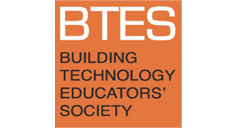Classroom as Laboratory: Engaging Architecture Students in Hands-on Building Science Research
Abstract
Knowledge of building science – how buildings perform with respect to energy efficiency, durability, comfort, and health – is a key aspect of sustainable architectural design. Although most building science courses are taught in a traditional lecture format, experiential teaching methods have the potential to improve student engagement and comprehension of technical subject matter.
This paper describes a case study of experiential learning in building science education. In Spring, 2018, we conducted a thermal comfort study as part of an integrated design studio at Pratt Institute in Brooklyn, NY. We measured temperature and relative humidity in the studio space and asked students about their thermal comfort via daily, point-in-time surveys.
We analyzed the sensor results using the PMV model, finding that the majority of the studio (87% of sensor locations) was within the comfort zone (PMV between -0.5 and +0.5) during the study period. Students’ average reported thermal sensation over the same period (AMV, or actual mean vote) was -0.46, a result that suggested cold discomfort. The discrepancy between PMV and AMV suggests that factors not measured in this study – such as mean radiant temperature or air speed – may have negatively impacted students’ comfort.
This case study suggests the potential for integrating hands-on building science investigations into technical architecture courses. Areas for improvement include tighter integration of these investigations into individual courses and the broader architecture curriculum to achieve the greatest impact on student engagement and learning
Keywords: Pedagogy, Experiential Learning, Building Performance, Thermal Comfort
How to Cite:
Brainard, G. & Correa, C., (2019) “Classroom as Laboratory: Engaging Architecture Students in Hands-on Building Science Research”, Building Technology Educators’ Society 2019(1). doi: https://doi.org/10.7275/tqj8-0v17
Downloads:
Download PDF
412 Views
249 Downloads

